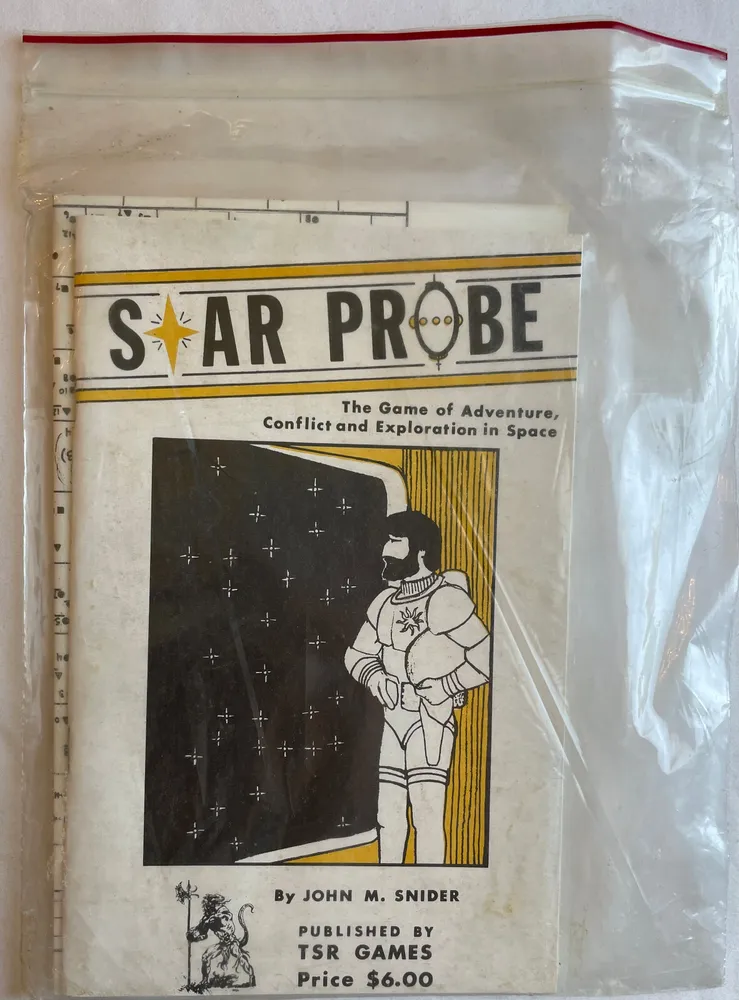Star Probe (1974)
Star Probe
“Star Probe” is a science fiction board game written by John Snider and published in 1975 by TSR, Inc., with artwork by Paul Snider. It was the first of a series of interconnected space games, followed by “Star Empires”. The game consists of a 36-page rulebook with a map and counters, which players use in their quest for interstellar exploration.
Why is Star Probe Popular?
“Star Probe” is significant because it was part of a growing field of science fiction board games in the 1970s. It was supposed to be the first game in a trilogy, but by the time TSR released the second game, “Star Empires” (1977), they had already found their niche and shifted their focus away from science fiction board gaming. The game is popular among fans of science fiction and board games, and it has been featured on platforms like BoardGameGeek.
Game Components of Star Probe
How To Setup Star Probe
Setting up *Star Probe* involves preparing the star map, distributing the game pieces, and organizing the record sheets. Players each command a starship, and the star map is laid out to represent the galaxy. Each player receives their game pieces and record sheets to track their progress.
Gameplay Mechanics and Game Objective
Player Experience
Playing *Star Probe* feels like a competitive game of *Star Trek*, where each player commands their own starship. The game is filled with strategic decisions, as players must balance exploration with resource management and the unpredictable nature of the star systems. The game mechanics encourage careful planning and adaptability.
Pros
Cons
Personal Thoughts on Star Probe
*Star Probe* is ideal for fans of early sci-fi games and those interested in the historical context of TSR’s early publications. It is a great introduction to simple, turn-based exploration games and can be enjoyed by both casual and experienced gamers. However, players seeking more complex RPG elements or modern game mechanics might find *Star Probe* too simplistic. Despite this, it remains a charming piece of gaming history that can still provide a fun and challenging experience.
We are supported by our audience. When you purchase through links on our site, we may earn an affiliate commission, at no extra cost for you. Learn more.

